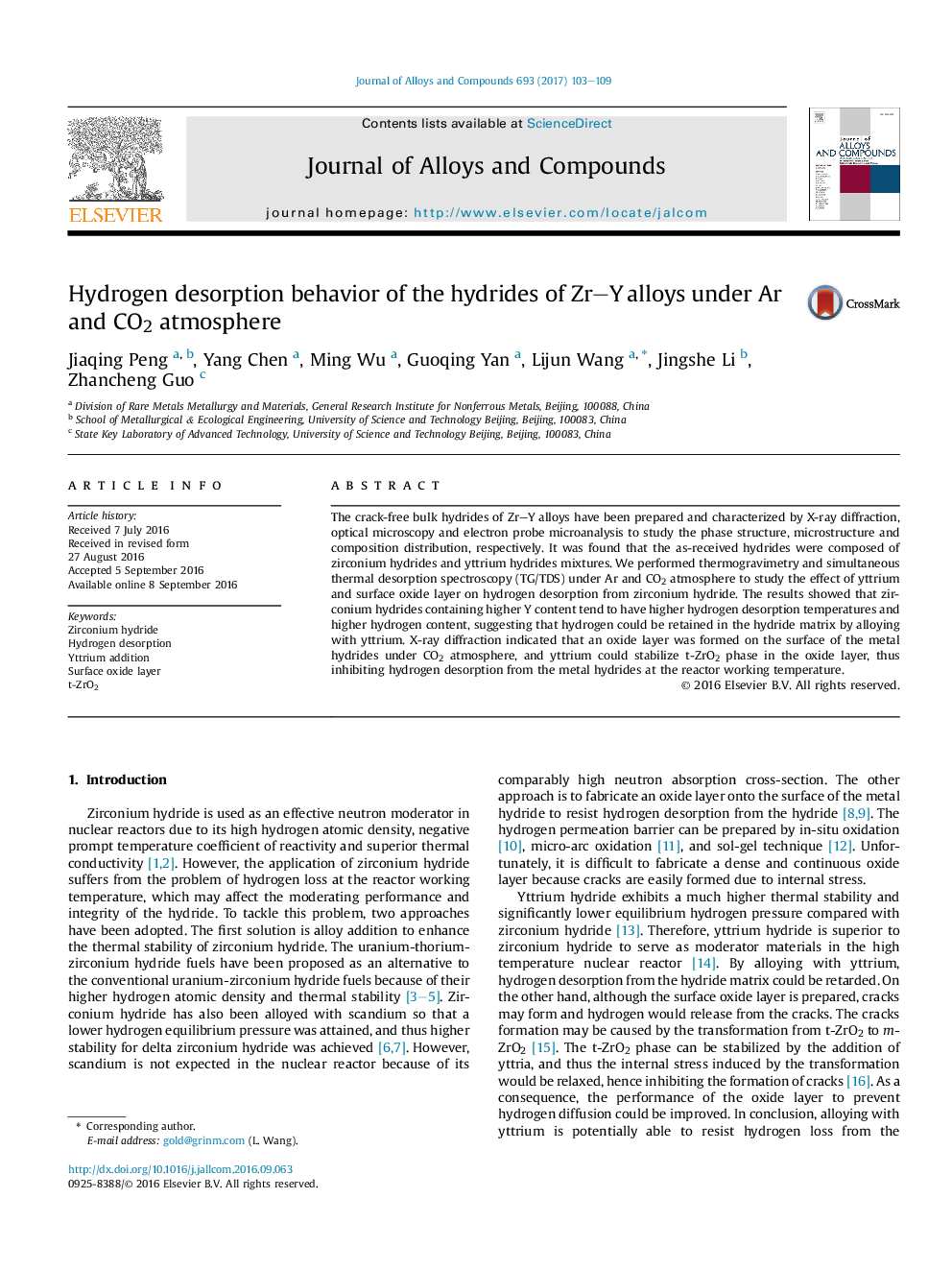| Article ID | Journal | Published Year | Pages | File Type |
|---|---|---|---|---|
| 5460986 | Journal of Alloys and Compounds | 2017 | 7 Pages |
Abstract
The crack-free bulk hydrides of ZrY alloys have been prepared and characterized by X-ray diffraction, optical microscopy and electron probe microanalysis to study the phase structure, microstructure and composition distribution, respectively. It was found that the as-received hydrides were composed of zirconium hydrides and yttrium hydrides mixtures. We performed thermogravimetry and simultaneous thermal desorption spectroscopy (TG/TDS) under Ar and CO2 atmosphere to study the effect of yttrium and surface oxide layer on hydrogen desorption from zirconium hydride. The results showed that zirconium hydrides containing higher Y content tend to have higher hydrogen desorption temperatures and higher hydrogen content, suggesting that hydrogen could be retained in the hydride matrix by alloying with yttrium. X-ray diffraction indicated that an oxide layer was formed on the surface of the metal hydrides under CO2 atmosphere, and yttrium could stabilize t-ZrO2 phase in the oxide layer, thus inhibiting hydrogen desorption from the metal hydrides at the reactor working temperature.
Related Topics
Physical Sciences and Engineering
Materials Science
Metals and Alloys
Authors
Jiaqing Peng, Yang Chen, Ming Wu, Guoqing Yan, Lijun Wang, Jingshe Li, Zhancheng Guo,
